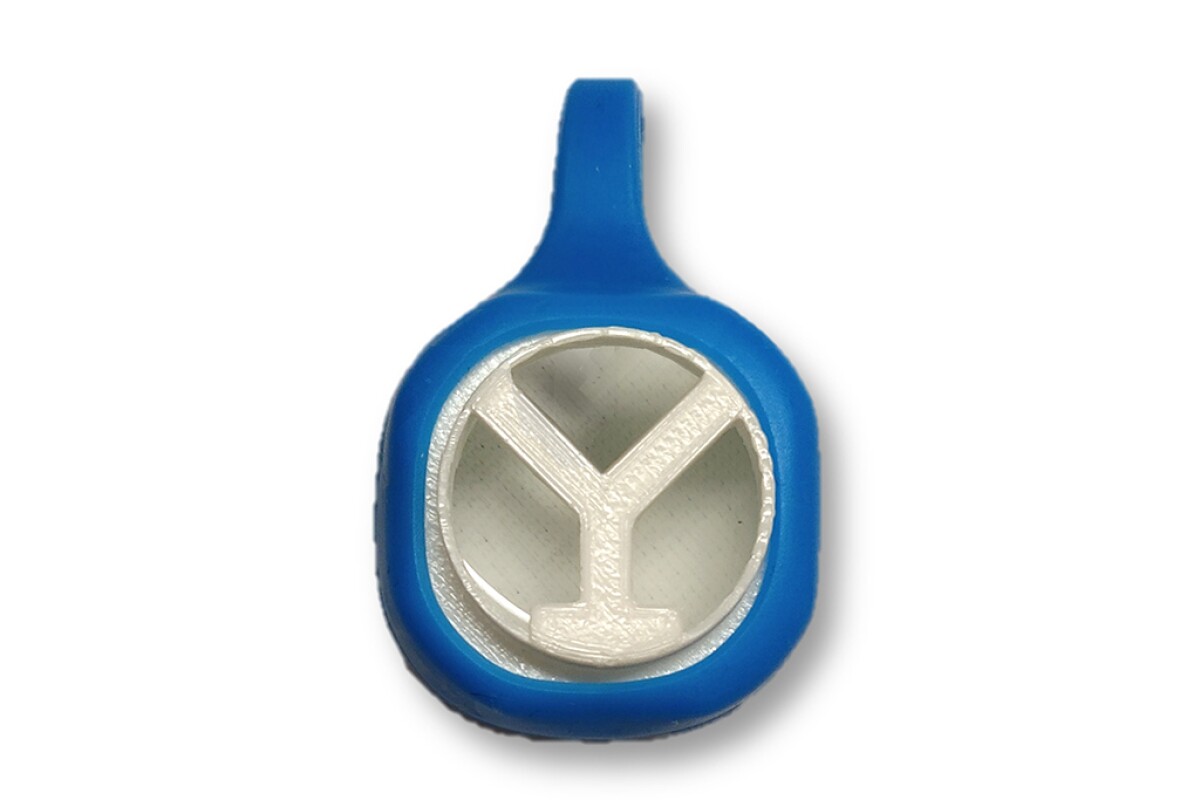Engineers from Yale University have developed a wearable device that can help individuals assess whether they have been exposed to SARS-CoV-2, the coronavirus that causes COVID-19. The cheap device can clip onto a person’s clothes and capture aerosolized viral particles in the surrounding environment.
From rapid tests to vaccines, many extraordinary innovations have helped us navigate this global pandemic. While we have a number of ways to determine whether a person has been infected with SARS-CoV-2, we still can only guess when and how someone has been exposed to the virus.
This new innovation from a team of Yale University researchers is hoping to fill that surveillance gap. Called the Fresh Air Clip, the device is cheap, designed to attach to a person’s collar and capture aerosolized viral particles around a person’s mouth and nose.
The clip captures viral particles on a polydimethylsiloxane (PDMS) surface. At the end of a day, or several days, a wearer removes the clip and sends it to a lab which uses polymerase chain reaction (PCR) analysis to determine the presence of SARS-CoV-2.
A new study is reporting on several tests of the Fresh Air Clip establishing it can effectively capture airborne viral particles. One experiment involved supplying the clips to a number of volunteers who wore the monitors for up to five days. Of the 62 monitors deployed, five returned positive results indicating exposure to SARS-CoV-2.
“Of the positive Fresh Air Clips, four were worn by restaurant servers and one was worn by a homeless shelter staff person,” the study indicates. “Notably, two positive samples collected in restaurants with indoor dining were found to have high viral load when compared to the other samples (>100 copies per clip), suggestive of close contact with one or more infected individuals.”
As well as establishing the wearable monitor as being able to capture detectable levels of viral particles the researchers note the device is sensitive enough to catch exposure events at sub infectious doses. This suggests the volume of viral particles picked up by the monitor allows for the quantification of environmental exposure to the virus. This is important as it means the device does not simply offer an indication of viral exposure but a measure of the level of exposure.
Krystal Pollitt, a researcher working on the device, says one interesting potential use for the device could be to test the effectiveness of ventilation settings in COVID positive patient hospital rooms. Speaking to Yale News recently Pollitt said her team found airborne traces of SARS-CoV-2 in hospital rooms that were thought to be well ventilated.
“We found this to be really interesting because we know that one of the infection control measures that is being highly recommended is enhanced ventilation,” said Pollitt. “Within the hospital network we had very high air change rates. Despite having those high air change rates, we were still able to detect airborne levels across the room.”
In its current form the Fresh Air Clip can be used as a way to screen indoor environments and establish whether they are high-risk areas for exposure. In an email to New Atlas Pollitt says the wearable can also be used to identify indoor exposure events days before positive cases appear.
“The Fresh Air Clip can be useful for early identification of exposure events and allow for rapid action to be taken,” Pollitt tells New Atlas. “Exposed individuals can get tested or quarantine to prevent potential community transmission.”
The next big step for the device will be to develop ways for the monitor to offer real-time notification of viral exposure, in much the same way a radiation strip can immediately notify a wearer they are exposed to gamma or x-rays. Pollitt says she is interested in further developing the device with real-time exposure notifications.
“It’s key to report back results quick,” Pollitt says. “We are keen to incorporate techniques for real-time SARS-CoV-2 detection.”
The new study was published in the journal Environmental Science & Technology Letters.
Source: American Chemical Society




